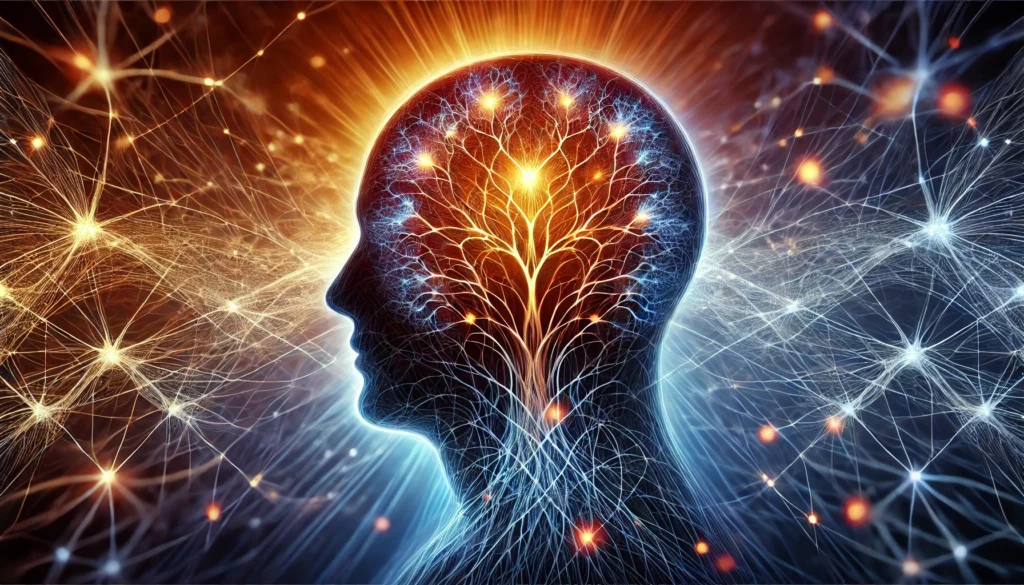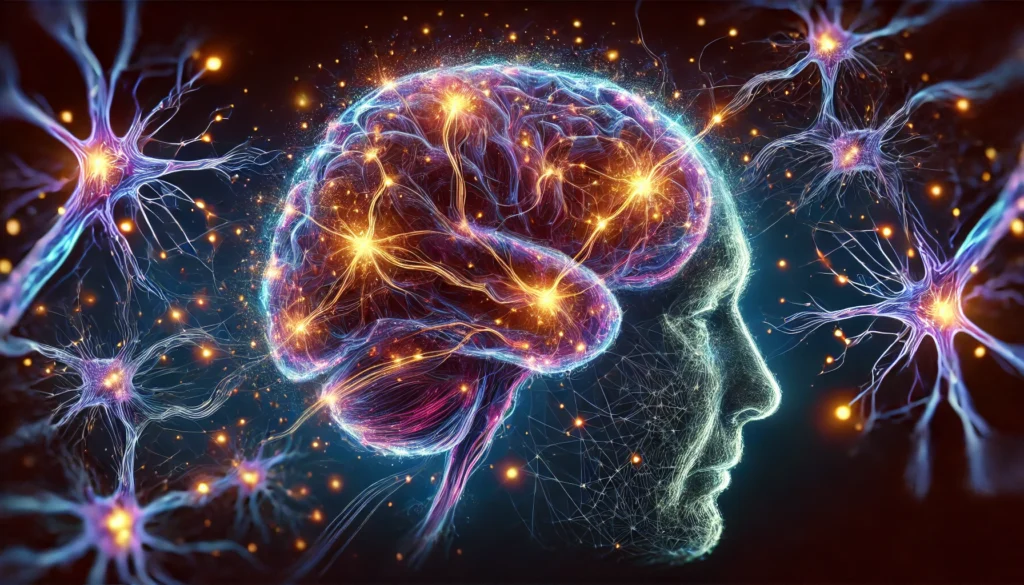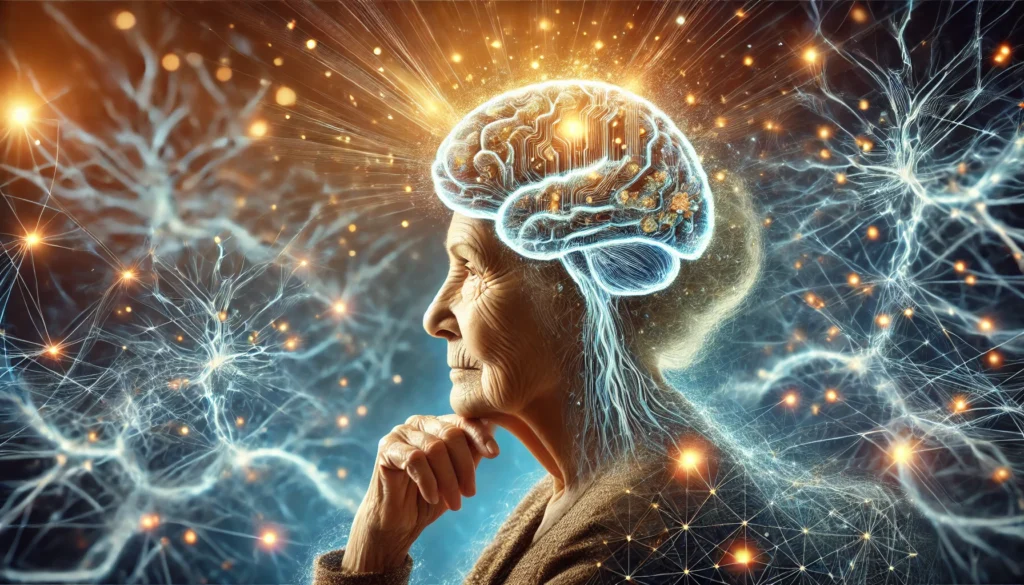Understanding Neuroplasticity and Aging
Neuroplasticity refers to the brain’s remarkable ability to reorganize itself by forming new neural connections throughout life. This dynamic process allows individuals to adapt to new experiences, learn new information, and recover from injuries. However, one of the most pressing concerns among neuroscientists and individuals alike is whether neuroplasticity decreases with age. As people grow older, changes in brain structure and function naturally occur, leading to questions such as: does neuroplasticity decrease with age, and if so, how can one mitigate these effects?
You may also like: How to Increase Neuroplasticity: Strengthening Neural Pathways for Better Memory & Recall
Aging is an inevitable biological process that affects every organ in the body, including the brain. While neuroplasticity persists throughout life, it tends to slow down as people age. Factors such as decreased synaptic density, hormonal changes, and reduced neurogenesis contribute to this decline. Yet, emerging research suggests that targeted lifestyle interventions can significantly strengthen neural pathways and promote cognitive resilience. Understanding the interplay between neuroplasticity and aging is crucial for developing strategies to enhance memory and recall in later years.
Does Brain Plasticity Decrease with Age?
Aging-related cognitive decline is often linked to reduced neuroplasticity, but the extent and nature of this decline are not uniform across individuals. While some aspects of cognitive function, such as processing speed and working memory, may decline, others, such as vocabulary and general knowledge, often remain stable or even improve. The question “does brain plasticity decrease with age?” is nuanced, as the degree of plasticity largely depends on lifestyle, genetics, and environmental factors.
Scientific studies have demonstrated that older adults still possess the capacity for neuroplasticity. For example, brain imaging studies reveal that the elderly can form new neural connections, albeit at a slower rate than younger individuals. The hippocampus, a critical brain region for memory, retains its ability to generate new neurons through neurogenesis. However, neurogenesis slows with age unless actively stimulated through cognitive challenges, physical activity, and proper nutrition.

When Does Neuroplasticity End?
A common misconception is that neuroplasticity has a definitive endpoint. However, research indicates that neuroplasticity does not end at a specific age. While it is true that neuroplasticity is more robust during early developmental stages, the adult brain remains adaptable throughout life. The ability to learn new skills, form memories, and adapt to new circumstances is retained well into old age, provided the brain is continuously challenged and nourished.
One of the key factors influencing neuroplasticity across the lifespan is environmental stimulation. The adage “use it or lose it” is particularly relevant when discussing brain health. Engaging in intellectually stimulating activities, such as learning a new language, playing a musical instrument, or solving complex problems, encourages synaptic growth and reinforces neural pathways. Additionally, social interactions and emotional well-being play crucial roles in maintaining cognitive function and delaying age-related decline.
Strengthening Neural Pathways for Improved Memory & Recall
Given that neuroplasticity and aging are intricately linked, the next logical step is to explore methods to strengthen neural pathways for better memory and recall. Several evidence-based approaches can help individuals optimize their brain function and counteract cognitive decline associated with aging.
Cognitive Training and Mental Stimulation
One of the most effective ways to enhance neuroplasticity is through cognitive training. Engaging in mentally stimulating activities strengthens existing neural connections and promotes the formation of new ones. Activities such as puzzle-solving, chess, reading complex material, and engaging in deep discussions can enhance synaptic efficiency and reinforce memory circuits.
Brain training programs, which incorporate exercises designed to improve memory, attention, and problem-solving skills, have shown promising results. Research indicates that structured cognitive training can lead to significant improvements in working memory, processing speed, and executive function in older adults. However, the key to success lies in consistency and challenge—tasks should be engaging and progressively difficult to encourage continuous adaptation.
The Role of Physical Exercise in Neuroplasticity
Physical exercise is not only beneficial for cardiovascular health but also plays a crucial role in brain plasticity. Regular aerobic exercise has been shown to increase brain-derived neurotrophic factor (BDNF), a protein that supports neuron survival and synaptic plasticity. Activities such as walking, swimming, dancing, and yoga can enhance blood flow to the brain, reduce inflammation, and stimulate neurogenesis in the hippocampus.
Additionally, resistance training and high-intensity interval training (HIIT) have been linked to improved cognitive function. Strength training exercises contribute to the release of growth factors that promote synaptic connectivity and enhance memory retention. Thus, incorporating a combination of aerobic and resistance exercises into a daily routine can yield substantial cognitive benefits.
The Impact of Diet on Brain Plasticity
Nutrition plays a vital role in supporting neuroplasticity and overall brain health. Diets rich in omega-3 fatty acids, antioxidants, and essential vitamins can enhance cognitive function and protect against age-related decline. The Mediterranean diet, which emphasizes whole foods, lean proteins, and healthy fats, has been widely studied for its neuroprotective effects.
Key nutrients that support neuroplasticity include:
- Omega-3 fatty acids (found in fatty fish, flaxseeds, and walnuts) help build cell membranes and improve synaptic function.
- Antioxidants (found in berries, dark chocolate, and green tea) reduce oxidative stress and inflammation, both of which contribute to cognitive decline.
- B vitamins (found in leafy greens, eggs, and legumes) support neurotransmitter function and reduce homocysteine levels, which are linked to neurodegeneration.
By maintaining a balanced diet rich in these nutrients, individuals can support brain health and enhance their ability to retain and recall information.
Sleep and Stress Management for Cognitive Longevity
Sleep is essential for memory consolidation and overall brain function. During deep sleep, the brain processes and stores new information while clearing out toxins that accumulate throughout the day. Chronic sleep deprivation can impair neuroplasticity, reduce cognitive function, and increase the risk of neurodegenerative diseases.
Managing stress is equally important in preserving cognitive health. Chronic stress and elevated cortisol levels can damage neural structures in the hippocampus, impairing memory and learning. Practices such as mindfulness meditation, deep breathing exercises, and spending time in nature can mitigate stress and promote neural resilience.

Frequently Asked Questions (FAQ) on Neuroplasticity and Aging
1. Can neuroplasticity be deliberately enhanced in older adults? Yes, neuroplasticity can be intentionally strengthened in older adults through targeted interventions. While many assume that brain plasticity inevitably declines with age, emerging research suggests that mental training, adaptive learning, and lifestyle modifications can significantly slow this process. Advanced cognitive techniques such as dual-task training, immersive virtual reality experiences, and gamified learning platforms have shown promise in extending neuroplasticity and memory retention. Additionally, engaging in real-world problem-solving activities, rather than passive learning, can lead to deeper neural adaptation. The key is continuous exposure to novelty and complexity, which encourages the brain to rewire itself more effectively.
2. Does neuroplasticity decrease with age at the same rate for everyone? No, the rate at which neuroplasticity decreases with age varies widely among individuals. Factors such as genetics, lifestyle choices, stress levels, and exposure to intellectually stimulating environments all play a role in how rapidly or slowly neuroplasticity declines. Some people maintain high levels of cognitive adaptability well into their later years, often due to habits formed earlier in life. Engaging in lifelong learning, maintaining strong social connections, and incorporating regular physical exercise can all mitigate the natural slowing of neuroplasticity. This means that while neuroplasticity and aging are linked, they do not necessarily follow a uniform trajectory across all individuals.
3. When does neuroplasticity end, if ever? Neuroplasticity does not have a definitive endpoint; rather, it continues throughout a person’s lifetime, albeit at a reduced pace. Contrary to popular belief, the brain never loses its ability to adapt, learn, or reorganize itself. However, if cognitive stimulation, proper nutrition, and mental challenges are lacking, neuroplasticity may become dormant, leading to cognitive rigidity. Some forms of neuroplasticity, such as experience-dependent plasticity, persist into late adulthood, allowing people to acquire new skills and recover from brain injuries. Thus, the question should not be “when does neuroplasticity end?” but rather “how can we sustain and maximize it for as long as possible?”
4. Does brain plasticity decrease with age in all cognitive areas? Brain plasticity does not decrease uniformly across all cognitive domains. While certain functions, such as processing speed and working memory, tend to show age-related declines, others, such as verbal comprehension and crystallized intelligence, remain stable or even improve. Additionally, compensatory neuroplasticity enables older individuals to engage alternative brain networks to perform cognitive tasks effectively. This means that even if primary processing speed slows, strategic thinking, pattern recognition, and knowledge retention can still flourish. Understanding these nuances can help individuals tailor their cognitive training to target areas most susceptible to decline.
5. What role do emotions play in neuroplasticity and aging? Emotions have a profound influence on neuroplasticity, particularly in aging individuals. Positive emotions and experiences can enhance synaptic connectivity and promote the release of neurotrophic factors that support brain health. Conversely, chronic stress, anxiety, and depression can weaken neural pathways and accelerate cognitive decline. Practices such as mindfulness meditation, gratitude exercises, and emotional regulation strategies can help older adults preserve neuroplasticity by creating a more adaptive and resilient brain. Emotional well-being should therefore be considered an integral component of neuroplasticity-enhancing strategies.
6. How does financial literacy relate to neuroplasticity in aging individuals? Financial literacy engages complex cognitive functions, including problem-solving, strategic thinking, and long-term planning, all of which support neuroplasticity. Managing investments, budgeting for big-ticket items, and making informed financial decisions require continuous learning and adaptation. The act of keeping up with evolving financial tools, such as retirement planning strategies and digital banking platforms, helps sustain cognitive agility. Additionally, understanding economic trends and adjusting personal finances accordingly can serve as a form of mental exercise, strengthening executive functions. By staying engaged in financial planning, aging individuals can inadvertently stimulate their neural pathways and maintain sharper cognitive faculties.
7. Can neuroplasticity be used to recover lost cognitive functions in aging individuals? Yes, neuroplasticity plays a critical role in cognitive recovery, particularly following neurological conditions such as strokes, traumatic brain injuries, or neurodegenerative diseases. Targeted rehabilitation programs that incorporate memory exercises, speech therapy, and sensorimotor training can help the brain compensate for lost functions by rerouting neural connections. Cutting-edge interventions, such as brain-computer interfaces and non-invasive brain stimulation, have also shown promise in enhancing recovery. While full restoration of function may not always be possible, neuroplasticity allows for partial compensation and adaptation. This underscores the importance of actively engaging in cognitive and physical therapies after any neurological impairment.
8. How does nutrition influence neuroplasticity in aging brains? Dietary choices have a substantial impact on neuroplasticity and aging. Certain nutrients, such as omega-3 fatty acids, flavonoids, and polyphenols, support synaptic integrity and enhance neurotransmission. Diets rich in whole foods, lean proteins, and antioxidants can protect against oxidative stress, a key contributor to age-related cognitive decline. Additionally, intermittent fasting and calorie restriction have been linked to increased production of brain-derived neurotrophic factor (BDNF), which plays a crucial role in synaptic plasticity. Thus, maintaining a brain-friendly diet can significantly influence neuroplasticity and memory retention over time.
9. Are there modern technologies that can enhance neuroplasticity in older adults? Yes, emerging technologies are being designed to specifically enhance neuroplasticity in aging populations. Virtual reality (VR) cognitive training, neurofeedback devices, and transcranial direct current stimulation (tDCS) are gaining traction as tools to boost brain plasticity. These innovations create immersive learning environments that challenge the brain in novel ways, encouraging adaptive neural reorganization. Additionally, artificial intelligence-driven brain games and personalized cognitive training platforms allow users to continuously engage in brain-boosting activities tailored to their needs. As technology advances, such tools may become integral components of neuroplasticity-enhancing strategies for older adults.

10. What are the long-term consequences of neglecting neuroplasticity in aging individuals? Neglecting neuroplasticity can lead to accelerated cognitive decline, increased risk of neurodegenerative diseases, and diminished quality of life. Individuals who do not actively engage in cognitive stimulation may experience memory lapses, difficulty with problem-solving, and reduced mental flexibility. Moreover, an underutilized brain is more susceptible to conditions such as Alzheimer’s and dementia. The good news is that neuroplasticity can be reactivated at any stage of life through deliberate effort. By prioritizing mental agility, emotional resilience, and lifelong learning, individuals can safeguard their cognitive health and maintain independence well into old age.
Conclusion: Lifelong Neuroplasticity and Cognitive Vitality
Neuroplasticity and aging are not mutually exclusive—rather, they coexist in a dynamic interplay that shapes cognitive function over time. While neuroplasticity does tend to decline with age, it does not end entirely. With intentional effort, individuals can strengthen neural pathways, enhance memory recall, and preserve cognitive function well into old age. By incorporating cognitive training, regular physical exercise, a nutrient-rich diet, adequate sleep, and stress management techniques, it is possible to support brain health and counteract the natural effects of aging.
Understanding that neuroplasticity remains adaptable throughout life provides hope and motivation for individuals seeking to maintain mental agility and sharpness. By proactively engaging in brain-boosting activities, anyone can harness the power of neuroplasticity to optimize memory, learning, and overall cognitive well-being for years to come.
Further Reading:
9 neuroplasticity exercises to boost productivity
Important Note: The information contained in this article is for general informational purposes only, and should not be construed as health or medical advice, nor is it intended to diagnose, prevent, treat, or cure any disease or health condition. Before embarking on any diet, fitness regimen, or program of nutritional supplementation, it is advisable to consult your healthcare professional in order to determine its safety and probable efficacy in terms of your individual state of health.
Regarding Nutritional Supplements Or Other Non-Prescription Health Products: If any nutritional supplements or other non-prescription health products are mentioned in the foregoing article, any claims or statements made about them have not been evaluated by the U.S. Food and Drug Administration, and such nutritional supplements or other health products are not intended to diagnose, treat, cure, or prevent any disease.


